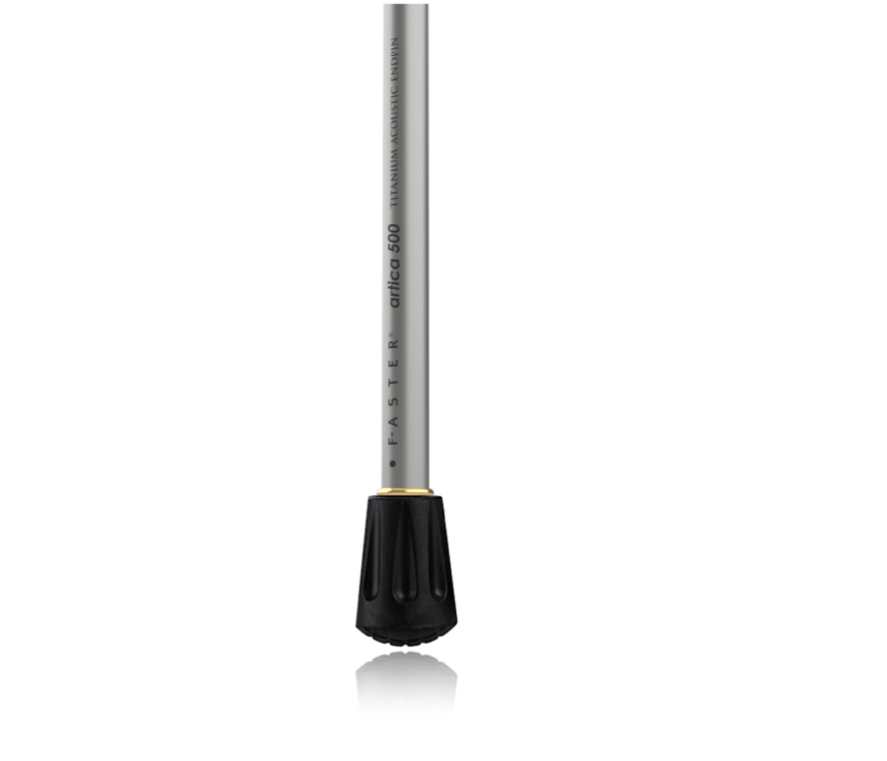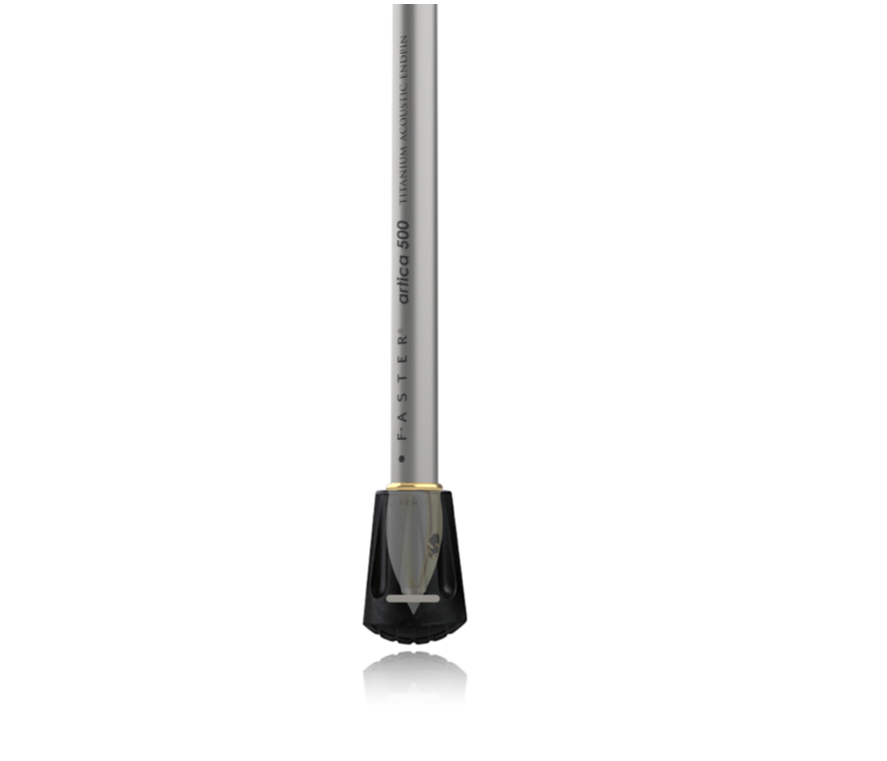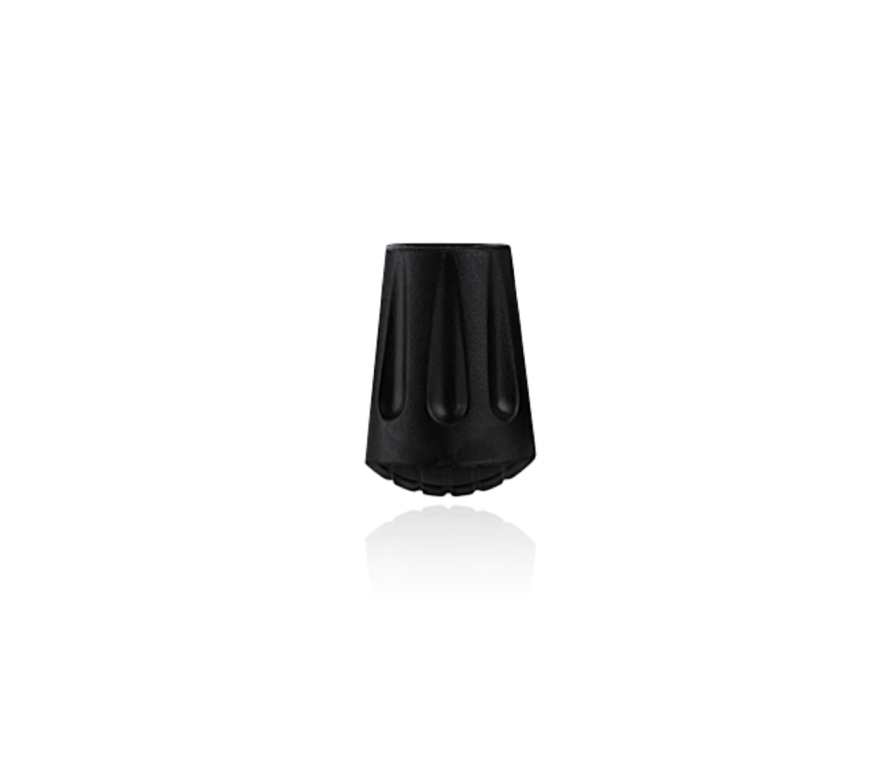Noa Rubber Tip for Artica 500
Noa Rubber Tip adapted by FASTER for the Double Bass Endpin Artica 500 Titanium & Siver, it fits perfectly in its oval capsule and protects the surfaces of its tungsten carbide tip.
Noa Rubber Tip is ideal for transporting the double bass and to cancel the acoustic effect of the Artica endpin when needed.
Noa Rubber Tip is made from a mixture of rubbers that offer good wear resistance under normal conditions of use. Its interior has been reinforced with a steel ring to intimately adjust the Artica Endpin tungsten carbide tip and to support the weight of the double bass.
-
Edward Vanderspar
Principal violist. London Symphony Orchestra. England
The FASTER Titanium fitted to my old viola has freed the sound, improved the response, made the instrument more reliable when traveling to different climates, and is real fun to play. The viola feels very free and more powerful and speaks more easily. I think it is a fantastic and fascinating invention.
-
Mauro Rossi
Violin concertmaster - Milano, Italy
The Faster Titanium is incredible. The violin has been reborn in a whole new dimension. It is the best acoustic invention in the history of the violin.
Congratulations!
-
Pablo de León
Concertmaster. Orquesta Sinfónica Municipal de São Paolo. Brasil
I have used FASTER Titanium in my Oddone violin since its assemblage in London. The violin sounds very well, is freer, and has a quicker response thanks to an increase in harmonics.
It is undoubtedly an excellent tool for those seeking to enhance the qualities of their instrument, and for that, I recommend it!
-
Vlad Stanculeasa
Concertmaster - Orquesta Sinfónica de Barcelona. Spain
The FASTER Titanium belongs to the trained ear seeking out the precise balance between string pressure and freedom of sound. A unique tool in service of expressivity.
-
Michele Ferrari
Maestro Luthier - Cremona, Italy
I have installed many FASTER devices, and the result is outstanding.
Acoustic volume and ease of playing have increased to a great extent in all cases.
If you want to equip your instrument with a turbo, I recommend it to everyone, both musicians and luthiers.
-
Miguel Jiménez
Principal cellist - Orquesta Nacional de España. Madrid, Spain
Of the present plethora of acoustic cello endpins, the FASTER Artica Titanium stands out to a notably large extent. It is the result of years of research and experience by maestro luthier José María Lozano, and, like FASTER for violin and viola, enhances both the quality and the quantity of sound in a truly astonishing manner. That happens both from the player and the listener’s perspectives. However, if I had to choose only one out of the multiple advantages it contributes, that would probably be its outstanding feeling of convenience. That is noticeable in the immediate reaction of the string in contact with the bow, and the left-hand’s smoothness of articulation. That not only produces better acoustics-related results but also, thanks to that feeling of convenience, gets to increase the cellist confidence in their instrument and themselves. Not everyone can afford a Strad; however, a big step is within everyone’s reach with FASTER. In my opinion, it instantly gets to turn a cello into a better one without spending a fortune.
Maestro Lozano and his FASTER succeed in making us happier by substantially improving our experience with the instrument.
-
Giovanni Radivo
Concertmaster - Orquestre National de Lyon. France
I have installed the FASTER Titanium by maestro Lozano in my J. B. Vuillaume violin, and I am well satisfied with the surprising effect.
The sound is more bright, open, and rich in harmonics. The response of the strings during a bow stroke is much quicker. The instrument is undoubtedly more comfortable to use, and besides, the wolf tone that it had on the fourth string is practically gone.
I strongly recommend FASTER to everyone wishing to enjoy their instrument’s potential to the fullest.
-
Javier Monteverde
Sound Engineer - www.cezanneproducciones.com. Madrid, Spain
Following the tests carried out in Cezzane Recording Studios, aimed to check the empirical result and potential advantages of the mechanical device called FASTER for violin, I have observed that the device has real effectiveness in the instrument tone.
My perception as a sound engineer and producer of many chamber music and orchestra recordings that include the violin as a soloist instrument is that, with FASTER, the sound is louder and more broadly spread. Besides, those notes that, due to the instrument’s characteristics, were excessively loud, are now balanced, and the listener perceives a more steady and silky sound. After recordings of the same length of time, I have also noticed that, with the FASTER device, the microphones have captured an extra richness in harmonics and sound frequencies, because, far from changing the timbre of the violin, it enriches its sound and therefore the music coming out of it.




